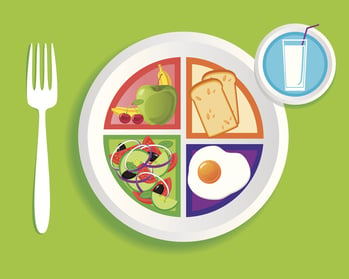 After the excitement of holiday parties and festivities slows down, we sometimes find ourselves in a funk. Life can seem a bit slow, minimal sunlight and weather keeps us cooped up inside, and we feel a bit sluggish. Get rid of winter blues with these tips to warm the soul.
After the excitement of holiday parties and festivities slows down, we sometimes find ourselves in a funk. Life can seem a bit slow, minimal sunlight and weather keeps us cooped up inside, and we feel a bit sluggish. Get rid of winter blues with these tips to warm the soul.
Warm Your Mind
- Think positively. When you’re feeling drained, it’s important to keep a glass-half-full mindset. Positive thinking starts with taking control and responsibility for your mind and attitude. A bad mood can be flipped simply by taking a slow, deep breath. In that moment you can change your entire day.
- Be nice to yourself. Everyone makes mistakes, so let yourself move forward.
- Smile. A simple smile can do wonders for your mind. How negative can you be if you are smiling?
- Meditate. Meditation is a great way to keep the mind healthy and thinking happy thoughts. It can be as long or short as desired. Meditation forces the mind to focus on the moment, allowing us to leave the world for a while and de-stress. Breathe in, breathe out, repeat.
Warm Your Body
- Move. Moving more throughout the day keeps blood circulating to all parts of the body. This includes blood flow to the brain, increasing alertness and productivity. (Here are some tips for finding motivation for winter fitness.)
- Break a sweat. Working out can provide feelings of accomplishment and happiness. Exercise causes serotonin secretion, the catalyst for a great mood.
- Practice mindful eating and nutrition. It’s easy to get carried away indulging in favorite comfort foods. The downfall is that they are typically high in carbs and fats. Although you think you want these foods, it’s not what your body needs. Stick to the basic guidelines: half of your plate fruits and veggies, one quarter protein, and one quarter grains.
Warm Your Heart
- Pay it forward. Do something nice for someone without expecting anything in return. We’ve all heard about buying coffee for the person who’s in line behind you. If you’ve experienced this, you understand how great the heart-warming gesture feels and why you might do the same for a stranger the next time. However, paying it forward does not have to be monetary. Simple notions such as opening the door or smiling as you say, “Hello” to someone can go a long way and often creates a ripple effect. One day, I came across an envelope lying on a bench, addressed as “to whoever comes across this.” I opened it to find a card with an incredibly nice and uplifting note written inside. It ended with a request to leave the card in a new place in order to brighten someone else’s day.
- Don’t be alone… all the time. Surround yourself with positive people. Spend time with those who make you laugh, who make you feel good about yourself, with people who motivate and encourage you.
- Play or exercise with puppies. Animals and pets can have a therapeutic effect on us humans. Find a furry friend to give your attention and love to; I prefer puppies. Don’t have any around? Visit a local animal shelter, or better yet, volunteer your time and double up on the fuzzy feelings!
Warm Your Spirit
- Be grateful. Showing gratitude shifts focus away from you and brings mindfulness to a greater purpose in life, helping strengthen the Spiritual Dimension of Wellness. Take a minute to let someone know that you are thankful for them or for something that they did. Writing down what you are grateful for can affect your spiritual side in a similar way.
Receive our blog straight to your inbox by subscribing below!


 It’s no secret that our emotions impact what we eat, when we eat, and how much we eat.
It’s no secret that our emotions impact what we eat, when we eat, and how much we eat.

 We see it, we eat it. Usually that’s how it goes, right? Of course we eat too much, but is it really our faults? Well, unfortunately for Americans, the portion distortion mania has gotten out of hand—and so has obesity. Over time, we’ve gotten so used to the larger portions being served at restaurants, we’ve come to think this is normal. Then of course that thinking spills over into a food addiction at home, too. More food, more food, more food. The craziness needs to stop now! (Here are
We see it, we eat it. Usually that’s how it goes, right? Of course we eat too much, but is it really our faults? Well, unfortunately for Americans, the portion distortion mania has gotten out of hand—and so has obesity. Over time, we’ve gotten so used to the larger portions being served at restaurants, we’ve come to think this is normal. Then of course that thinking spills over into a food addiction at home, too. More food, more food, more food. The craziness needs to stop now! (Here are 